[Epistemic status: it is late and I am tired and I wanted to get a blog post out. No guarantees of quality.]
It is said that one of the highest-level and most awe-inspiring of rationalist skills is Sitting And Thinking About Something For Five Minutes.
The sitting part isn’t that difficult. It’s not even that hard to…how should I put it…apply mental effort at the problem. But that mental effort tends to be spent rehearsing the solutions already thought up, retreading worn paths, ruminating on how difficult the problem is.
Coming up with entirely novel ideas is really, really hard.
I’m intrigued by how many new ideas people seem to have either during dreams or on drugs. Kekule famously discovered the structure of benzene when he dreamt of an ouroborus. Loewi discovered chemical neurotransmission in a dream experiment that he was able to repeat in reality. Crick’s discovery of DNA and Mullis’ discovery of PCR were both on LSD.
A lot of people think dreams and drugs involve some magical inspiration. I think otherwise.
I rarely get inspired by dreams or drugs, but I have my own secret source of inspiration: mishearing other people. Somebody says something, I misinterpret it, and the misinterpretation is quite interesting – more interesting than anything I would have come up with on my own if asked to generate an interesting idea. Maybe it’s a clever joke or turn of phrase. Maybe it’s a neat idea. Sometimes I misunderstand people’s entire positions, and end up with positions much more interesting than the ones they were trying to push.
This puts the dreams and drugs into a kind of different light.
Suppose that ordinary thought is in really, really deep ruts – I mean the word “rut” metaphorically but not idiomatically, imagine an actual rut for this – that are very hard to break out of. If you try to break out of them, you end up not in the trackless steppe, but in whatever the nearest other rut is nearby. Just as humans can’t generate random numbers, so they can’t generate random ideas. An attempted random idea will just be a portion of the rut you’re in less often than usual, or a slight variation on an existing rut.
In that case, adding a certain amount of noise to a problem – dreams and drugs certainly count – might be a way of inspiring new ideas.
Metaphors seem like another attempt to escape conceptual ruts. I was in an argument today over IQ. Somebody claimed there couldn’t be a general factor of intelligence, because evo psych has shown there are lots of different mental modules.
I answered that there are lots of different physical “modules” (hands, feet, abs, et cetera) but there can be a general factor of physical fitness that determines your skill at using all of them. Frail 70 year old cancer patients will have low physical fitness across all these “modules”, and young guys on steroids will have very high fitness across all of them.
That there could be both multiple independent modules, and a general factor of skill common to all of them, seems to have genuinely not occurred to my interlocutor. This isn’t surprising – it’s a complicated abstract topic. Maybe if he had Sat Down And Thought About It For Five Minutes, he could have derived it from abstract principles. But at least for me it was easier to analogize it to a very similar situation, such that taking a well-worn rut in the old situation leads you to a new and surprising answer in the isomorphic new situation.
I know Douglas Hofstadter is very interested in building artificial intelligences that understand metaphors, thinking they are the key to human cognition. And a lot of people seem to think that even if we create some sort of very smart AI type thing, it will be less powerful than generally believed because we won’t have solved the problem of creativity.
I suspect creativity will be a relatively tractable problem. My guess is that humans, in a sense, have negative creativity. Their brains are specifically designed to make it hard to get out of a rut, because ruts represent well-worn cognitive pathways and things outside of them are probably useless and crazy.

This picture is mildly interesting because instead of immediately collapsing into one rut, your brain hangs suspended between a rabbit rut and a duck rut. We nod and call this Ambiguity. But unless you Sit Down And Think About It For Five Minutes, you’re not going to notice that it could be a hairdryer that has been split open, let alone an erotic BDSM picture of a clothespin attached to a female breast. Maybe if you caught it right out of the corner of your eye, without time to think, or if it was disguised by visual noise, you would notice one of the latter two immediately – at the cost of not being able to see the duck or rabbit.
Researchers are probably right when they expect the first AIs to have zero creativity, but zero creativity might be so much better than us negative creativity humans that they won’t need the crutches we use like metaphors and dreams. If they have to, maybe they can just actually generate random noise in hypothesis-space and see where it takes them.


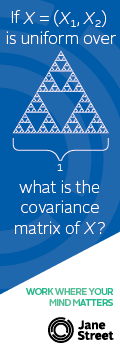




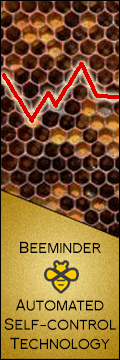

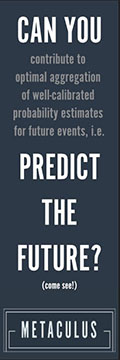
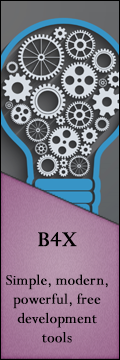



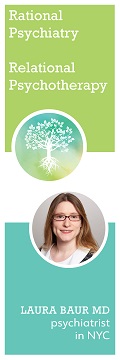


I don’t know that “random noise” is actually what you want for a seed, when being creative. I think you want something with a chaotic structure to it, rather than pure entropic stochasticism.
In partner dancing I sort of stumble onto inventing a lot of new moves by fucking up a standard move. But then it’s kinda hard to remember the new move since it was based on a mistake. The only times I remember a new move is if I make the same mistake at the same point in the step constantly.
That also seems to happen when writing music. I’ll play a wrong note and think “oh, that sounds cool” and try to repeat/record it.
The performance challenge is making it look like I intended to do the wrong note/move all along.
Neil Gaiman noted, in his commencement address that’s all over the Internet, that he once misspelled “Caroline” as “Coraline” and he went “that’s interesting,” and saved it for later.
I know I’ve done the same thing with food. I have a 1-cup brownie recipe that I use as a test-bed for larger-production brownie variants, like brownies with ginger or chili powder (both are much better than they sound.) At one point, I made one with twice the normal amount of water, and I found the texture much improved, to the point where the core recipe was altered to match my mistake.
The nice thing about writing or foodmaking is (ideally) nobody knows I ever made a mistake, though I’ll usually cheerfully admit to it.
Brownies with chili powder sound excellent. Anything chocolate is improved by the addition of chili powder.
They were, but I haven’t gotten the chili powder quite fine yet, it tends to distribute unevenly in full batches. When my family can stand the sight of me bearing brownies again, I’m going to try grinding the powder in a coffee grinder. I think the “flash of inspiration” is a little overvalued compared to the slow iterative process of getting a creative work ready for others to consume. Think actually putting sentences together for writing, or endless trial and error in cooking.
But thinking on it, neither idea came from a blinding flash of inspiration. Many of my most successful recipes have come from “riffing” off other recipes or concepts – the ginger brownies came from a chocolate-covered ginger candy beloved of my father, and the chili powder from a local cafe that puts habanero oil in chocolate cake, as well as a Mexican variant on hot chocolate that uses cinnamon and sometimes chili powder.
(I will rant all day about food if nobody stops me, someone stop me.)
I remember reading that Neuromancer’s great opening line “The sky above the port was the color of television, tuned to a dead channel” was intended just to describe a blue sky, because Gibson’s television showed a blue screen on dead channels, but that most people read it and picture black-and-white static, which makes the line a lot cooler and more memorable (imo).
This is as good a place as anywhere to ask a question that’s been bothering me for a while.
A lot of collections of “most brilliant opening lines in all of literature” include the first line of 1984: “It was a bright cold day in April, and the clocks were striking thirteen.”
Given that thirteen is just one o clock in military time, and that I think Britain uses this more than we do (I know Ireland did when I was there), why is this interesting or unusual?
Did digital clocks exist when Orwell wrote 1984? Actual analog wall clocks and grandfather clocks, which you are perhaps too young to remember, rang 1 time at 13:00, not 13 times. (“Striking” is literal, of the chimes in the clocks.)
Can you find where you read about Gibson? I suspect that you are confused by this or something similar:
Language Log complains that it’s anachronistic and that Gibson should have known that we wouldn’t have static in the future. But still I saw static today, synthesized as part of a youtube error message.
Re: clocks striking thirteen – I think it does give an uncanny feeling because our mind is trained to latch on to twelve and thirteen as neighbouring Significant Numbers, and as most people subconsciously have a tiny amount of discomfort with thirteen, they’d want to reframe it as “Twelve plus one”, at which point it’s a short associative leap to the twelve-hour day and hence the feeling that something is off/out of the norm/out of bounds.
The Wikipedia article on clocks striking 13 has some cool stories in it: http://en.m.wikipedia.org/wiki/Thirteenth_stroke_of_the_clock .
We use the 24-hour clock here in the Netherlands, but when it’s 13:00, we still *say* it’s one o’clock. We’d say ‘dertien uur vijftien’ (thirteen hours fifteen) only when making an appointment, to avoid confusion between ‘kwart voor een’ (12:45) and ‘kwart over een’ (13:15) – those sound quite similar, especially by telephone. I imagine it’s much the same in Britain, except they’d be even less likely to use 24h time in speaking, because ‘quarter to one’ and ‘quarter past one’ are less similar.
Re: Gibson – nope, he definitely intended to start off with the tech-noir equivalent of “It was a dark and stormy night”.
Winston Smith is walking in the street, “his chin nuzzled into his breast in an effort to escape the vile wind”, so when Orwell writes, “The clocks were striking”, he means public clocks, of the kind that England has in profusion in the towers of churches and on the facades of civic buildings. These clocks indicate ten o’clock by striking a bell ten times, for the benefit of people nearby who needed to adjust their own (mechanical) clock, or who didn’t have their own clock at all. These clocks were (and remain) 12-hour clocks: they are historical artefacts in a country inclined to nostalglia. The army and the railways may switch to 24-hour time, but the church clock will show “ten to three” at tea-time for as long as the English continue to value history over efficiency.
So for the clocks of London to be striking thirteen means that there has been a sweeping change in English society. To change a 12-hour mechanical clock into 24-hour is not straightforward (and their custodians would not voluntarily make the change), so either the old clocks were destroyed, or some power made people replace them, or the national character has changed.
I once put 2 tablespoons instead of 2 teaspoons of cinnamon and ginger into my gingersnaps, and it was *so much* better than the original recipe. Probably higher variance, though, instead of generically better for all people.
We tried it in teaspoons and tablespoons, because once the idea has been had, the road to perfection runs through a thousand minute variations. But in brownies, we used 1/2 teaspoon of ginger, 1/2 teaspoon of cinnamon, and 1/4 teaspoon of nutmeg per ounce of baking chocolate. Any more than that risked overpowering the chocolate, which isn’t a design consideration in a straight gingersnap.
So another lesson about creativity: every bit of complication requires more slogging and tedious experimentation, to see how the new addition affects every other variable. Like layer upon layer of accretion around a grain of sand forms a pearl.
A mass of errata because it’s late and I’m tired too.
I remember a fiction book I once read that compared human thought to wagon ruts – the more a thought had been thought, the easier it was to go down that road again, until the mind couldn’t get out of the rut until it had hit the end. The author was IIRC talking about trauma aftermath, but I can’t remember what book or what author. If I find it again, I’ll post it here.
But it’s very similar to how my mind works, especially when I’m storytelling. I tend to find phrases that aren’t much – “do you know who/what I am?” has been circling endlessly the last few weeks – and eventually I find a story to slot them into and they leave me alone. Some other bits of dialogue have been circling, waiting for enough story-mass to accumulate to them so I can actually write the damn things. One phrasebit – “move up the left flank” has been circling my brain for about 8 years now, and might never get written by this point.
I’ve found that my occasional panic attacks seem to manifest as lots and lots of these phrasebits all circling my brain at once, with no way to break the circle except exiting the situation that’s stressing me out.
I’ve noted that two writers whose style I admire – Warren Ellis and Dan Abnett – have both said, at different times and different places, that essentially, their brains work by accumulation of idea, thing A meets thing B meets thing C and then IDEA. This is mostly how many of my story ideas are born, and then they slowly grow and mutate and shift into full-fledged things as I feed them mental mass. Or they die. But in my head, thing A and B and C can be imagined as amorphous ruts, and the Idea is the new place where the three of them meet, and other things will be added on, either at the Idea core or onto one of its tributary branches. Like a mind-map, though my kinda chaotic way of noting these down doesn’t resemble any mind-map I’ve ever seen.
So tldr – I think you’re onto something here.
I’ll just throw out there that I spend a decent portion of my time in conversations trying to come up with funny things to say, and the way humour feels from the inside to me is as if I suddenly jumped out of a thought-rut in an unexpected place. A mental deke, or something; zigging when I should have zagged. Has anyone else noticed something similar?
Yes.
My peak creativity seems to be right after I wake up. I wonder if there’s a really simple neurochemical explanation for this, like “the inhibition that usually keeps you in your ruts is turned off during sleep and only slowly comes back on afterwards”.
I find that novel ideas (in so far as I have them) come to me a few minutes after I’ve woken up, while I’m still in bed and relaxed.
Actually, yes!
Wieth, M., and Zacks, R. (2011). Time of day effects on problem solving: When the non-optimal is optimal. Thinking and Reasoning, 17 (4), 387-401
Isn’t it trivially easy for an AI to “generate random noise in hypothesis-space” ? All you do is randomize the coefficients of your neural network, or your genetic algorithm seed, or whatever. Boom, instant random hypothesis. Of course, the downside is that you usually don’t have time to pursue every random hypothesis you can come up with, so maybe there’s something to that “rut” stuff after all…
Yes, it’s a very standard tradeoff in optimization algorithms, not just for optimizing abstract things like hypotheses, but for optimizing more tangible things too. E.g., finding configurations of protein molecules which are energetically favored, or optimizing a circuit board layout so that cost of manufacture will be minimized while the pattern of electrical connections you need is still preserved. If an algorithm makes big jumps in configuration space, it will almost always end up so far from anything practical that it wastes a lot of time. Once it has found something practical, there are probably lots of similar practical configurations nearby, and it is usually worth systematically investigating them.
This is not an obscure, subtle, little-known tradeoff: there are thousands of algorithms and heuristics for trying to help cope with the problem, and fundamentally it is one of the aspects of the very famous P=NP conjecture, so if anyone ever finds a good way around it, any reasonably serious computer science-y graduate is familiar with the techniques for translating the solution into a radically improved solution for any of hundreds of important currently-intractable problems.
Yes, this is why I expect AIs to be good at this sort of thing.
Related.
I agree with Hofstadter on this. Our culture’s folk model of cognition divides thinking into two halves: “ordinary” thought and “creative” thought. And we tend to assume that all everyday reasoning tasks can be solved with “ordinary” thought, while “creative” thought is limited to particularly extraordinary artistic acheivements or scientific discoveries.
Because we usually think of metaphor and analogy as part of the “creative” side of this dichotomy, we tend to assume it’s possible to build an AI that does human-level reasoning without using either of these things. But Hofstadter, Lakoff, and others in that tradition have provided some very compelling evidence that metaphor and analogy lie at the core of human reasoning. They’re not part of some special “creative” module; they’re used in the most basic and ordinary thoughts. And the mechanisms behind metaphor and analogy are probably the same mechanisms that allow us to do abstract reasoning at all.
I disagree with you here. As other commenters have pointed out, creativity isn’t just random noise. You can make all sorts of analogies that sort of make sense but just aren’t useful. Like, I can compare my pencil to a carrot because they’re both long and skinny, but who cares? This analogy doesn’t lend us any insights into the world.
Analogies are a tool for reasoning, and we look for analogies that can actually help us understand things better. A good creative analogy is one that isolates some core, important structure in one domain and relates it to another domain. This helps us reason because (1) we’ve extracted this abstract core, and (2) we can apply things we know from one domain to the other, in order to draw conclusions.
Humans somehow manage to search over the vast space of possible analogies and isolate ones that are actually useful. This is a rather nontrivial search problem.
Regarding ruts: they often get us in trouble, but they’re not inherently a flaw in the human reasoning system. We evolved thought-ruts for a reason, and I’m pretty sure that reason is efficiency. Thought-ruts are basically the same thing as habits: they’re automatic behaviors that we can engage in without having to think too hard about them. It’s much easier to do something when you’ve built up a habit for that thing, because you can just follow a precompiled action-path instead of having to go through a laborious decision-making process at each step. And as you’ve mentioned, it’s hard work to think new thoughts each time! It requires this time-consuming search procedure over the space of possible thoughts, in order to find one that’s both new and useful. It’s much easier, computationally, to reuse the thoughts you’ve already generated. (This probably explains why we fall into thought-ruts so much more often when stressed: the mind is like “ok I have to devote less resources to thinking, and more resources to fleeing tigers” so it just uses stored-up thoughts instead of trying to explore new thought-paths.)
Anyway, I tend to assume that an AI might also fall into thought-ruts, due to these same efficiency concerns. Whether you’re a human or an AI, it’s faster to use pre-generated thoughts than to try and come up with new ones.
I guess it might be easier for an AI to manually override the tendency to get stuck in thought-ruts, but I suspect machine learning researchers will implement something similar to thought-ruts, in the interest of efficiency. My advisor has actually suggested something very similar to thought-ruts (reusing previously generated samples) to make inference in our model run faster.
If any of this is unclear, please ask me questions! I study AI and have read a ton of books on metaphor/analogy, so I can probably summon clarifying examples as needed.
It seems likely that the only reason humans need analogies to reason abstractly is that the human brain originally evolved to do concrete reasoning, and it is only by repurposing these functions that we can get anything done. An AI explicitly designed for abstract reasoning might not have these problems.
Since dreams and drugs are mentioned as possible means of escaping the rut, would lucid dreaming somehow enhance creativity? I was planning on getting into LD for a while but haven’t seen enough incentive too so far.
Even better than mishearing other people is misspeaking! (search for “flash”)
━━━━━━━━━
Are the specific stories of inspiration true? I think the Kekule story is decades too late to be believable. Mullis credits LSD with permanently changing his thoughts, not with particular inspiration. The Crick story has anachronistic details. Ridley claims that Crick did not use LSD till 1967. Those who claim he used it for the 1953 double helix claim that he got it from Huxley, who didn’t try mescaline till the week after the publication. In another country.
Note that even the true stories of inspiration are the exceptions, and probably are getting outsized attention. Kubla Khan may have been written in a opium-induced dream, but 99% of poetry is written while awake, just as the vast majority of scientific progress comes from routine drudgery rather than House-like flashes of insight.
Another term for “worn paths” is “roads.” We build them for a reason.
Well said. The role of drugs in creative endeavours is certainly over-played, for although they may serve as a source of inspiration and serve to spur thoughts, the actual creation tends to be done sober.
For me it’s the other way around; drugs tend to ease the discomfort of focusing my attention and give a greater variance, and often emotional valence as well, to a single thought I might be focusing on…
– but I generate ideas when sober, either by being on the lookout for spontaniety, or just trying to grab some semi-random unrelated categories and methodically make things from them into “modifiers” to apply to the current ideas.
There’s a bunch of mechanical creativity methods described in the book Mind Performance Hacks. You can use tables to create new permutations from a set of concepts, then think about the new thing. You can have a fixed set of operations like “switch this thing for another thing”, “take a thing away”, “use the thing for something different”, “combine the thing with something else”, which you try to apply even to things where they don’t initially seem appropriate.
I have always perceived thought generation as composed of three types.
1. Synthesizing, adding one part of a thought to another.
2. Dividing, taking one part of a thought away.
3. Skewing, adjusting the relationship between parts and/or switching the perspective you look at the problem with.
This provides a broader framework to view advice such as Mind Performance Hacks. Those 3 methods are the only mechanisms there are for generating novel useful thoughts, I think.
As far as I can remember, Hofstadter claims that capability for metaphor is the same as capability for creative thought, and that both of them are iterative processes which create consciousness. As far as AIs go, google already does metaphors reasonably well (re: all the misspelled searches etc), but doesn’t seem to exhibit any consciousness so far.
I disagree that google already does metaphors well in general. Correcting misspelled search queries is a very specific kind of metaphor. In general, metaphor involves finding an alignment between two very complex knowledge-structures in our minds. We don’t know what those knowledge structures look like, and we don’t know how to find an alignment between them. In the case of search queries, on the other hand, we do know what the structures look like, and because they are linear strings, we have various efficient methods of finding alignments between them. (I’m not sure what google uses, but one can use things like finite state transducers/weighted minimum edit distance.) Whereas in general, our knowledge is unlikely to be linear, and might be much more like a graph, in which case metaphor understanding might be computationally similar to graph isomorphism, which is NP-complete.
…apologies if that was way too technical and made no sense. But basically, we don’t know how to do metaphor understanding in the general case, and this is a wide open research problem.
The difference between guessing the right word behind the misspelled one (in many different languages, including such weird mongrel language as modern english) and creating a metaphor is more of a difference in degree then in kind. Metaphors really don’t need to be links between very complex mind structures – arguably, the most powerful metaphors are those between the most obviously similar structures, and simpler seems better in that regard. Not many people can find metaphor in works of Nietzche, but everyone finds it in folk proverbs.
Thinking back to creativity and noise and thought ruts, I find it funny that psychedelic drugs that seem to offer the biggest creativity boost (LSD etc) seem also to completely obliterate the usual well traveled neural paths – (memory loss, difficulty with recall, difficulty with memory formation, etc). Seems to me that instead of adding noise to the system, they just level the field of preferential thought structures (in the sense of already established permanent neural networks getting reset close to zero).
Spell checking is actually a fairly simple computational problem. Peter Norvig was able to throw one together in about 20 lines of Python
This makes sense to me — I think most of my creative moments come when I see an intersection between two topics/books/ideas/etc. I never considered before. Perhaps synthesis is the great rut-breaker?
I think you’ve just invented brainstorming 🙂 But I think you’re right.
I think “add some noise to the creative process” is an idea I’ve heard lots of places, that I think of as basically fairly accepted eg. Startup companies that tackle ideas everyone else was too scared to. Meetings when everyone says “i was thinking that but I worried it was too silly”. The advice to “just write” when you’re stuck for an idea. http://blog.codinghorror.com/quantity-always-trumps-quality/
I think the “rut” metaphor is probably a really good one — if you’re looking for a better idea, you need some time getting out of a local optimum in any direction, in order for your natural “being good at stuff” to be easily able to seek a closer-to-global optimum.
I like this thought a lot. I think this makes sense
I noticed some similarities of the metaphor you use here and a similar one used in fantasy novels. Specifically, a bit about being stuck in a rut and the phrase “trackless steppe” reminded me a lot of certain dialogue from R Scott Bakker’s Second Apocalypse books, where a character uses a similar metaphor comparing custom to a set series of mountain passes/etc as contrasted by the trackless steppe, where one does not have given routes. Have you read those, and if so what was your impression?
Hah, I had the same thought
My choice of “trackless steppe” was very consciously informed by Kelhus’ use of same. Of course I’ve read it 🙂
I understand this to be roughly what the Oblique Strategies are about.
http://en.wikipedia.org/wiki/Oblique_Strategies
You’re thinking about a problem and you feel stuck, so you draw a random card from the deck. The card says something like “Not building a wall; making a brick”, or “Try faking it”, and you just try to apply the card to the problem, even if it doesn’t really make sense. This random shunt in idea-space can sometimes knock you out of a rut.
This is totally the point of Tarot! A random set of vague yet symbolic cards that let you think about life problems sideways.
Seconded; in fact, i was just about to make this exact same comment.
I would just like to add that IMO one of the smartest designs of Tarot is the division of the deck into minor cards and trump cards. Trumps (like Death, Hanged Man etc: the cards you are probably thinking of when you think of Tarot) are usually read as being more significant than minor cards. So, for example, if I’m using tarot to help me think about new strategies for my business and I draw three trump cards, my thoughts get instantly a lot bigger: I start to imagine international strategies or other such hubris. And sometimes this is just what’s needed! The ability to shift your thoughtpatterns from day-to-day matters into utopian daydreams (or vice versa) is quite helpful.
…Okay, so I definitely didn’t see either a duck or a rabbit in that picture. In fact, I think my brain got confused for a while, read the paragraph, looked at the picture again, managed to see the horrifying vaguely rabbity creature in addition to the horrifying vaguely ducklike creature facing the other way, and finally settled on Vermicious Knid as the only acceptable explanation.
My familiarity with this rut tells me that this thread is going to go down into a rut of IQ posturing very quickly. Could we try not to do that? Or failing that, not do it before having read Cosma Shalizi’s posts on the topic?
A creative friend of mine says that he has access to a flow of random images. He believes that everyone has a similar flow, but suppresses awareness of it. It’s probably typical mind fallacy to say everyone has a flow of random images, but it wouldn’t surprise me if it’s fairly common, and that there might be something of the sort for other sensory modes.
I recently did a Win Wenger hypnotic induction where the premise is that promoting imagery and attention to it in a context that frames it as generating solutions to problems is useful, and it did turn up something useful that I hadn’t thought of after years of trying to solve something.
How does the random input theory fit with the commonly reported process of working hard on a problem, then finding a solution after setting the problem aside and relaxing?
The part where you said you mishear other people, misinterpret it and then have a new idea – shares similarity with Harold Bloom’s ideas about Shakespeare’s soliloquies, wherein the character speaks aloud, mishears himself, misinterprets what he misheard and then allows that new interpretation to change him away from his original stance, allowing growth. Think I read that bit in “The Western Canon,” but I’m sure he elaborates on it more thoroughly in some of his Shakespeare-focused books which I haven’t read.
Side question, can we generate ways of adding random information to the human brain?
I suspect there’s something like that going on with some fortune telling and meditative methods. The “oblique strategies” cards seem to be deliberate aiming for this.
The simplest method would be random wikipedia articles, quotes, words, or images but maybe needs to be slightly more structured to be useful. (Maybe thats why some people find music makes them more creative?)
Some more ways.
Whenever I’ve started learning a new language, there has been a short but funny and fascinating period where practicing it naturally involves combining my tiny vocabulary in grammatical but bizarre ways. These bizarrities force a brainstorm and make the language feel powerful and exceptionally expressive. But really I could do the same thing in my native language if I wanted. For example, Chomsky wrote a now-famous nonsense sentence that nevertheless feels grammatical, “Colorless green ideas sleep furiously.” Later on, C.M. Street gave a beautifully poetic meaning to the sentence with the addition of context:
I’m tempted to use a random sentence as my own online version of those “oblique strategies” cards you mentioned.
New ideas are frequently built from unexpected combinations of old ideas. So an easy way of adding slightly more structure to your proposed method is to visit multiple random wikipedia articles or read multiple randomly selected quotes, and then imagine what ideas would combine or connect them. A fun app might take two random blog posts and make a mash-up version. Running this blog post through a Markov chain generator gives a few gem sentences, slightly edited:
It seems machines can get stuck in them, too.
EDIT: While I’m trying out that Markov chain generator…
This may be my new favorite sentence. Thank you, Markov generator.
Hadn’t seen this before. Love it.
Let me see if I understand. Rough paraphrase/summary: Humans understand new concepts and ideas in terms in things they already understand. This puts a constraint on the ideas that humans can usually have – they are only able to explore a small part of hypothesis space. You call this negative creativity. Whereas creativity is the ability to explore all of hypothesis space. Humans can’t really explore the whole hypothesis space but they can use random concepts to try to explore more of the hypothesis space.
What you call negative creativity though, I would simply call creativity. Evolution is lazy, it is constantly reusing bits and pieces made for one purpose for something else*. This is true on a biochemical level and also on a macroscopic level. Its unsurprising that the brain would work the same way. Here is one example – music. Listen to some of Beethoven’s 5th. You’ll notice a lot of repetition in the melody and rhythm. The same ideas are reused in different ways, new ideas are introduced and interwoven with the old, these new ideas are also repeated in different ways with common themes and motifs holding the entire piece of music together. To me, this is a great analogy for many human advances and displays of creativity and ingenuity.
Here is another example: physics. For several hundreds of years, calculus was the main tool of physics. After Newtonian mechanics, physicists spent a lot of time and effort using the very simple ideas of creating relationships between differentials and integrals in order to describe physical systems. This is a very simple idea – its simply quantifying how properties change with respect to other properties. Electromagnetics and early quantum mechanics were simply variations on this theme. That is creativity, not a lack of it.
*Please don’t lawyer me about evolution not being an agent with goals. You know exactly what I mean.
There’s another piece– that human minds tend to repeat thoughts even when there is nothing obvious gained from the repetition.
Yes, that is a side effect just as nervous habits are side effect of muscle memory (which helps us learn physical activities). I’d rather have the whole package though.
Making this a bit more concrete. The point of science (and perhaps even cognition in general) isn’t to evaluate hypotheses. It is to make sense of the world in a way that is useful or interesting to humans. Back to the evolution analogy, most molecules in molecule-space are totally useless to organisms and even the useful ones would be very difficult to find via random sampling. Evolution tweaks molecules that have proven applications because the tweaked versions are more likely to be useful to organisms than a random molecule. Likewise, most hypotheses are totally useless to us. There are even a lot of true hypotheses that are useless to us. Thinking via analogy and pattern recognition is a good (though not necessarily perfect) way of getting at concepts that are useful or interesting.
It seems weird to say something like “human minds are bad at creativity, they need an external source of random noise like dreaming”. I mean, dreaming is something that is done by human minds.
Everything the brain’s doing is pattern recognition. Your attention is drawn to unexpected patterns – they’re flagged as more “interesting.” The reason Tarot cards and listening to half-heard conversation works well to stimulate creativity is that you’re pattern-matching to patterns that aren’t actually there, and possibly biasing the patterns that you’re finding with strange and novel priors.
Usually the noise which you’re pattern-matching against is being used to answer a question which you’re explicitly or implicitly asking. For example, in Kekule’s case, he was “asking” the structure of benzene – he was clearly obsessed with it, who dreams of an Ouroboros and thinks, “Oh, the solution to my research problem”?
Hofstadter is close but not close enough to be right. He’s too attached to his pet idea that metaphor is the magic sauce. Metaphor is just the act of simultaneous pattern recognition between concepts – “this is similar to that” – “this triggers a lot of the same conceptual units as that” – “this is like that in this way.” If you build an AI that actually works, one capable of forming and recognizing concepts, then something very much like metaphor and creativity should come along for free.
Source: a lifetime of reading and thinking and shit
“Your attention is drawn to unexpected patterns – they’re flagged as more “interesting.””
I think there are pulls in both directions– or at least, when I look at a table of books for sale, my attention is sometimes drawn to the familiar books rather than the new ones.
Sure. The familiar books register a ping of recognition. The unfamiliar books register nothing – you expect to see unfamiliar books. A tiny, pink walrus sitting on the table amid the books would register as unexpected and would also draw your attention.
I think human minds are pattern-matching machines. It’s a useful ability for identifying what object, plant, or creature you happen to be looking at. I also fall into mental ruts – once I think I understand something as being a certain type of thing or acting a certain way it’s difficult for me to not think of it that way. I assume this is just more pattern matching.
I’m not convinced that “creativity” isn’t a necessary component of any AGI. I’m having trouble imagining an agent that I would call a general artificial intelligence that doesn’t also have some measure of creativity. One necessary condition for an AI to be considered “general” would be the ability to find solutions to problems it has not encountered before or been programmed to solve: is that not necessarily a form of creativity?
Relately, this is an excellent talk on how to be “creative”: http://youtu.be/tmY4-RMB0YY Spoiler: the secret isn’t to have some nebulous quality called “creativity”. It’s to spend time and mental effort generating many different ideas.
I’ve always felt like the mainstream opinion regarding drugs/inspiration was simply that it makes you think differently, outside perspective so to speak. I don’t think there’s much more to it and haven’t really heard anyone ascribe any “magical” connotations to it outside of 14 year old fans of Tool. It’s refreshing though to see this idea applied more broadly, as it seemed like a pretty short jump to “things that aren’t drugs that make you think differently”.
There are 14-year-old fans of Tool?
There were, back when I didn’t feel way too old.
You might be interested in reading more about the Bohm Dialogue, which attempts to create a conversation that breaks out of the “ruts” of each individual’s understanding.
Seems relevant: http://www.cs.toronto.edu/~nitish/msc_thesis.pdf
Creativity is making lots of analogies.
Intelligence is making good analogies.